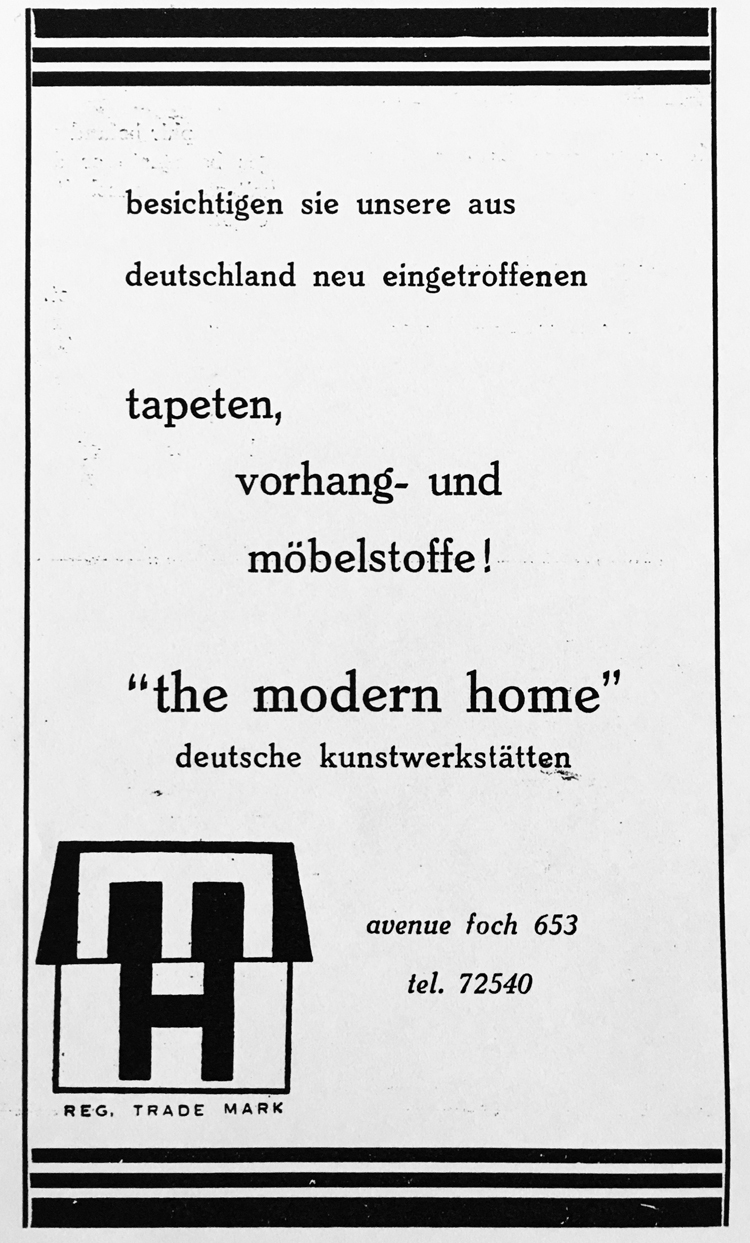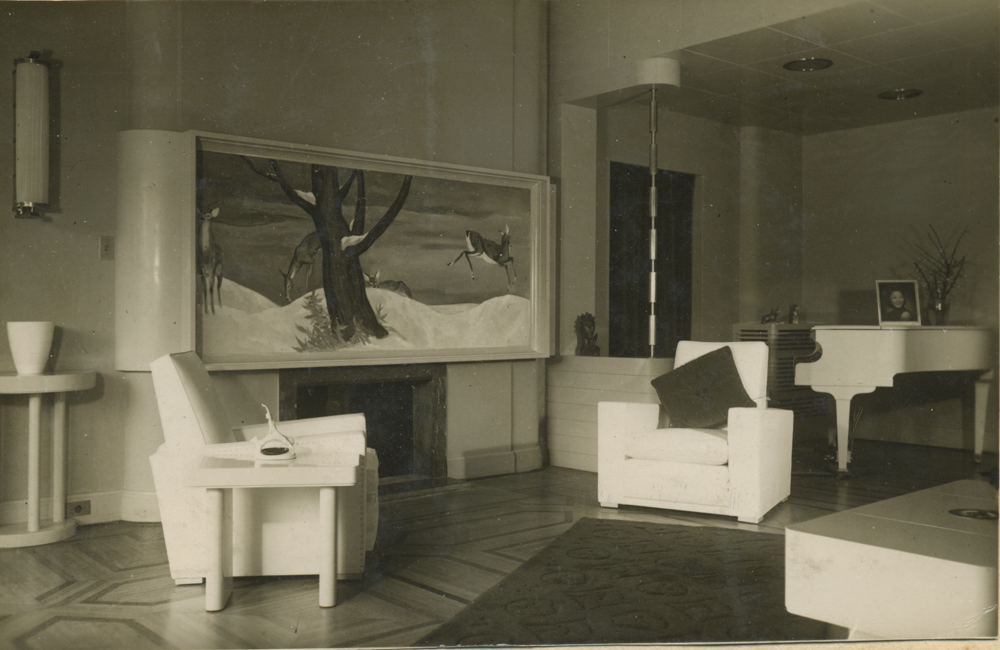Archive
Modern Homes
- Modern Homes
The Modern Home, Modern Home
- Architecture and Furniture Company
The three firms The Modern Home, Modern Home and Modern Homes existed from 1931 until 1950. Run by the Paulick brothers together with the Jewish emigrant Luedecke, the firms provided work for many emigrants.
Word Count: 32
653 Avenue Foch, French Concession (Yan’an Lu, Huangpu Qu); 871 Bubbling Well Road (Nanjing Xi Lu, Huangpu Qu), Shanghai

Rudolf Hamburger, interior decoration for The Modern Home, photography (© Hamburger family). 
Advertisement, The Modern Home, 1931. 
Modern Homes, letterhead, around the late 1940s (© private archive, courtesy of Natascha Paulick). 
Modern Homes, Tango Bar, interior, photography (© Architekturmuseum der TU Munich, Estate Richard Paulick). 
Modern Homes, interior, photography, around 1941, pauli-22-1002 (© Architekturmuseum der TU Munich, Estate Richard Paulick). The landscape painting was made by the Austrian artist Friedrich Schiff. Kögel, Eduard. Zwei Poelzigschüler in der Emigration: Rudolf Hamburger und Richard Paulick zwischen Shanghai und Ost-Berlin (1930–1955). , University of Weimar, 2006, doi: https://doi.org/10.25643/bauhaus-universitaet.929.
Word Count: 26
United State Holocaust Memorial Museum, National Council of Jewish Women Cleveland Section Holocaust Archive Project, Oral history interview with Eva Luedecke, Accession Number: 1993.A.0087.92 | RG, Number: RG-50.091.0092, 1984 November 10, https://collections.ushmm.org/search/catalog/irn505033. Accessed 2 March 2021.
Word Count: 37
- 1931
- 1950
Rudolf Hamburger, Richard Paulick, Rudolf Paulick, Hans Werther, Hans Achim Luedecke
- Shanghai
- Eduard Kögel. "Modern Homes." METROMOD Archive, 2021, https://archive.metromod.net/viewer.p/69/2952/object/5145-11304823, last modified: 15-09-2021.
-
David Ludwig BlochArtistShanghai
David Ludwig Bloch is known for his paintings and watercolours revolving around the Holocaust and his exile. With the woodcuts from his time in exile in Shanghai, Bloch created an artistic account of everyday life in the city, while harvesting the simplicity of form and colour of the medium.
Word Count: 49
Richard PaulickArchitectDesignerShanghaiAfter studying with Hans Poelzig, Richard Paulick worked in Walter Gropius’s office and frequented the Bauhaus in Dessau before emigrating to Shanghai in 1933. After his return, he became an influential planner and architect in the GDR, from 1950 until his retirement
Word Count: 41
Lyceum TheatreBuildingShanghaiThe new Lyceum Theatre was designed in an eclectic style by British architects Davies & Brooke and opened on 5 February 1931.
Word Count: 20
Photo WillingerPhoto StudioShanghaiBefore their emigration to China in 1938, Margarete and Wilhelm Willinger ran several successful photo studios and agencies in Berlin (until 1927), Budapest and Vienna. Their son was the photographer Laszlo Willinger.
Word Count: 30
Friedrich Hermann SchiffArtistCartoonistDesignerShanghaiFriedrich Schiff was an Austrian-born artist who went to Shanghai in 1930. He became known for his humorous cartoons, which were enjoyed by the colonial bourgeoisie.
Due to his Jewish origins, he was unable to return to Austria after Hitler’s annexation of Austria in 1938. He left Shanghai for Buenos Aires in 1947.Word Count: 51
Victor SassoonEntrepreneurShanghaiVictor Sassoon was a descendant of the Baghdadi Jewish Sassoon merchant family. He contributed significantly to a real estate boom in Shanghai in the 1920s and 1930s and helped European Jews in the Shanghai Ghetto. An ambitious amateur photographer, he produced many images of people and events of the time.
Word Count: 50
St. John’s UniversityUniversity / Higher Education Institute / Research InstituteShanghaiIn the first half of the 20th century, St. John’s University in Shanghai was an important Protestant university under American leadership. During the 1940s, German emigrants also taught there, after British and American university lecturers were interned in the wake of the Japanese attack on Pearl Harbor.
Word Count: 48